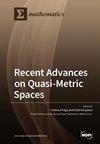Adaptation of an Eddy Current Model for Characterizing Subsurface Defects in CFRP Plates Using FEM Analysis Based on Energy Functional
IF 2.3
3区 数学
Q1 MATHEMATICS
引用次数: 0
Abstract
In this work, a known Eddy Current (EC) model is adapted to characterize subsurface defects in carbon fiber-reinforced polymer (CFRP) plates intended for the civil aerospace industry. The considered defects include delaminations, microcracks, porosity, fiber breakage, and the simultaneous presence of these defects. Each defect is modeled as an additive variation in the material’s electrical conductivity tensor, allowing for a detailed mathematical representation of the defect’s influence on the CFRP’s electromagnetic behavior. The additivity of the variations in the conductivity tensor is justified by the assumption that the defects are not visible to the naked eye, implying that the material does not require non-destructive testing. The adapted EC model admits a unique and stable solution by verifying that all analytical steps are satisfied. To reconstruct 2D maps of the magnetic flux density amplitude, a FEM formulation is adopted, based on the energy functional because it ensures a stable and consistent numerical formulation given its coercivity. Moreover, the numerical approach allows precise and reliable numerical solutions, enhancing the capability to detect and quantify defects. The numerical results show that the obtained 2D maps are entirely superimposable on those highlighting the distribution of mechanical stress states known in the literature, offering a clear advantage in terms of detection costs. This approach provides an effective and economical solution for the non-destructive inspection of CFRP, ensuring accurate and timely defect diagnosis for maintaining structural integrity.利用基于能量函数的有限元分析法调整涡流模型,以确定 CFRP 板材的次表层缺陷特征
在这项工作中,对已知的涡流(EC)模型进行了调整,以表征民用航空工业用碳纤维增强聚合物(CFRP)板材的次表面缺陷。考虑的缺陷包括分层、微裂缝、多孔、纤维断裂以及这些缺陷的同时存在。每个缺陷都被建模为材料导电张量的叠加变化,从而可以用数学方法详细表示缺陷对 CFRP 电磁行为的影响。电导张量变化的相加性是通过假定缺陷肉眼不可见来证明的,这意味着材料不需要进行非破坏性测试。通过验证所有分析步骤是否满足要求,改编后的导电率模型具有唯一且稳定的解。为了重建磁通密度幅值的二维地图,采用了基于能量函数的有限元计算方法,因为考虑到其矫顽力,该方法可确保数值计算的稳定和一致性。此外,该数值方法允许精确可靠的数值求解,从而提高了检测和量化缺陷的能力。数值结果表明,获得的二维地图与文献中已知的机械应力状态分布图完全叠加,在检测成本方面具有明显优势。这种方法为 CFRP 的无损检测提供了一种有效而经济的解决方案,可确保准确及时地诊断出缺陷,从而保持结构的完整性。
本文章由计算机程序翻译,如有差异,请以英文原文为准。
求助全文
约1分钟内获得全文
求助全文
来源期刊

Mathematics
Mathematics-General Mathematics
CiteScore
4.00
自引率
16.70%
发文量
4032
审稿时长
21.9 days
期刊介绍:
Mathematics (ISSN 2227-7390) is an international, open access journal which provides an advanced forum for studies related to mathematical sciences. It devotes exclusively to the publication of high-quality reviews, regular research papers and short communications in all areas of pure and applied mathematics. Mathematics also publishes timely and thorough survey articles on current trends, new theoretical techniques, novel ideas and new mathematical tools in different branches of mathematics.
 求助内容:
求助内容: 应助结果提醒方式:
应助结果提醒方式:


